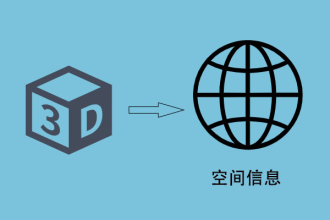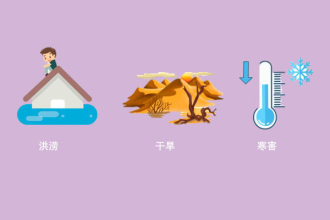
|
全球共同努力,夺回我们1/4 的生命 —— 复苏的再认识与中国CPR•D 行动中国医学救援协会 2020-03-03 |
点击蓝色字关注我们
全球共同努力,夺回我们1/4的生命
——复苏的再认识与中国CPR•D行动
李宗浩
一
20世纪50年代前,医学科学家就认识到约有1/4的生命是在不该死亡时而失去,但在现场却无有效的复苏技术。60年代初,口对口吹气和胸外心脏按压诞生,彼得•沙法(Peter Safar,1924—2003)和william B.Kouwenhoven认为,同时进行这两项操作是合理的。不久,沙法教授把这两种方法结合起来,即基本“心肺复苏术(cardiopulmonary resuscitation,CPR)”,其简便易学,效果可靠,广为传播,“所需一切,只是双手”。本方法所带来的希望是,在美国和欧洲平均每天能挽救近1000例院外猝死患者。半个世纪来,事实证明了CPR的效果[1-3]。
1989年,在中国香港举行的第六届世界灾害与急救医学会议(World Congress for Disaster and Emergency Medicine,WCDEM)和随后在北京举行的卫星会议,沙法教授与本文作者也讲述了同样的内容,并且在1993年对作者主编的、中国出版的《现代急救医学》序言中明确写到了这个观点,对中国在此领域的发展给予了很高的期望[4]。
20世纪末,CPR普及于全球。此间,随着科技进步,1992年“生命链(chain of survival)”概念被提出,即四个早期(Early),包括早期通路(early recognition and call for help),早期心肺复苏(early CPR),早期心脏除颤(earlydefibrillation)和早期高级生命支持(earlyadvanced life support)。此概念的提出,奠定了自动体外除颤器(automated external defibrillator,AED)在抢救院外心脏骤停(out-of-hospitalcardiac arrest, OHCA)患者中的重要地位和作用,使猝死抢救成功率明显提升。
二
现代CPR及AED虽源于欧美,但中国对此的研究及实践应用与其同步。中国在1963年拍摄的《触电急救》和1978年拍摄的《生命的复苏》这两部科教影片,系统介绍了CPR技术,并且在六个省及北京、上海两个市作了调研,在广东应用猴、狗的动物实验做了心脏除颤的研究[5]。
2018年,中国医学救援协会联合中华护理学会,发布了《现场心肺复苏和自动体外心脏除颤技术规范》标准,中国医学救援协会依据此标准开展了心肺复苏培训[6]。
中国政府对心肺复苏等急救技能的普及十分重视。2018年,国家卫生健康委员会委托中国医学救援协会开展心肺复苏技术培训,提高心源性猝死抢救成功率[7]。此外,2019年中国国务院发布的《关于实施健康中国行动的意见》中也明确提出,心脑血管疾病是我国居民第一位死亡原因,要引导居民学习掌握心肺复苏等自救互救知识技能[8]。
综上所述,无论是从理论、实践还是政府支持层面来看,中国心肺复苏的发展都正处于一个最为有利的时期。我们要不失时机地壮大心脏猝死抢救力量,努力夺回那些不该逝去的生命。
中国每年发生“心脏猝死”的人数达54万(登记数据),随着人口老龄化等因素,心脏猝死的形势更为严峻,而心肺复苏抢救技术规范使用尤为重要。
随着全球经济一体化,中国作为世界上人口体量最大的国家,应责无旁贷地推动人类命运共同体的建立,与全世界的同道们一起为提高全球心脏猝死抢救成功率,规范有效开展抢救作出努力。
三
现代CPR的理论、技术、实践、设备配置及运作方式等已基本成熟,我们需要在此基础上,共同推进,同时考虑不同国家、地区的个体情况,进行完善。
人类文明的进步需要互相学习借鉴。中国医学救援协会作为中国唯一的以“急救”为主要任务的国家级行业、学术组织[9],2019年成立了中国复苏联盟(China Resuscitation Alliance,CRA)。CRA将与全球复苏联盟(GlobalResuscitation Alliance,GRA)密切合作,与美国心脏协会(American HeartAssociation,AHA)、欧洲复苏委员会(EuropeanResuscitation Council,ERC)、挪度总部(Laerdal)等国际著名组织合作,认同Utstein标准,开展全方位工作。
2019年12月9日,在美国西雅图举行的“全球复苏联盟会议”(该会议是2018年春季在哥本哈根举行的Utstein II执行会议的延续)邀请中国复苏联盟主席参会。李宗浩教授的专家团队与GRA的专家们进行了交流,介绍了CRA,建立了合作机制。GRA的专家对中国CPR的现状与发展给予了很高评价,对今后的合作以及2020年在中国举行CPR会议显示了很大的热情,并且建立了密切的合作渠道。
全球复苏专家们取得共识,尽快制定共同标准,规范并统一具体抢救技术及程序,建立全球统一的登记体系。中国将根据Utstein标准等方面积极开展工作,在CPR、AED等行业学术上加快包括培训基地在内的一系列标准制定的步伐,充分利用现代信息传播手段,以文字、图片、短视频等形式,加强心肺复苏的宣传,以适应全球CPR事业的发展。
由于《中国急救复苏与灾害医学杂志》是中国唯一冠以现代急救、心肺复苏、灾害救援为刊名和内容的专业杂志,杂志将为CRA、GRA以及AHA、ERC、Laerdal等国际组织的学术交流提供最大的方便,本刊为此将设CPR•D专栏,并计划每年专出一期学术专刊。
随着现代文明的进步,2020年也将迎来全球心肺复苏的新时代,共同努力,为夺回1/4不该逝去的生命作出成绩。
A Global Effort to Avoid the 1/4 of Deaths
An review on CPR and China’s CPR•D Action
LI Zonghao
I
Before 1950s, scientists have alreadyrealized that 1/4 of the deaths could have been avoided if there were effectiveresuscitation on the spot. In the early 1960s, mouth-to-mouth breathing andexternal chest compression were invented. Peter Safar and William B.Kouwenhoven believed that the two can be performed at the same time. It didn’t take long before Professor Safar combined the two and named itcardiopulmonary resuscitation(CPR). As an easy and effective method, CPR spreadfar and wide, claiming “all you need isyour hands”. CPR was expected tosave almost 1000 out-of-hospital victims of cardiac arrest in Europe and the USevery day, which has been well proved during the past century[1-3].
Professor Safar reiterated to the authorthe same idea in 1989 at the 6th World Congress for Disaster and EmergencyMedicine in Hong Kong and the subsequent satellite meeting in Beijing. He alsoput this argument in the preface he wrote for Modern Emergency Medicine, a bookedited by the author, published in Beijing in 1993, expressing his highexpectation for CPR’s developmentin China[4].
CPR has already spread across the world bythe end of the 20th century. Along with the technological advances, the conceptof “Chain of Survival” was brought forth, which incorporates the “four Earlys”, namely, earlyrecognition and call for help, early CPR, early defibrillation and early advancedlife support. Such a concept gave automated external defibrillator (AED) amajor role to play in rescuing the patients of out-of-hospital cardiac arrest(OHCA), thus remarkably increasing the rescue success rate.
II
Although modern CPR and AED originated inEurope and America, China has managed to keep up with them in research andpractice. First-aid to Electric Shock and Life Resuscitation, two Chinesepopular science films made in 1963 and 1978 respectively gave a systematicintroduction to CPR. For making the films, surveys were conducted in sixprovinces and the two municipal cities of Beijing and Shanghai, anddefibrillation experiments on monkeys and dogs were undertaken in Guangdong[5].
China Association for Disease &Emergency Rescue Medicine (CADERM) organized CPR training programs in 2018under the Technical Specifications for Cardiopulmonary Resuscitation andAutomated External Defibrillator, a document of standards co-released by CADERMand Chinese Nursing Association (CNA)[6].
The Chinese government attaches greatimportance to the spread of CPR and other emergency rescue skills. In 2018, theNational Health Commission commissioned CADERM to organize CPR training toimprove the rescue success rate of cardiac arrest. [7] In 2019, in the Opinionon Implementing the Healthy China Initiative released by the State Council,cardiovascular disease is listed as the No. 1 cause of death for Chinesecitizens, who, as the Opinion suggests, should be guided through learning CPRand other emergency rescue skills to save themselves and others when needed[8].
The above facts in research, practice andgovernment support all suggest that China is at its prime time for CPRdevelopment. We should lose no time to engage more people in CPR application,striving to save more lives from an early death.
Over 540,000 people died of cardiac arrestin China every year (registered statistics). With an aging population, thesituation can only get worse, making the standard use of CPR techniques evenmore urgent.
In a globalized world economy, China, withthe largest population, should take the responsibility to join theinternational community in increasing the rescue success rate of cardiac arrestby carrying out standard and effective emergency rescue, so as to build acommunity of shared future for mankind.
III
Modern CPR has basically matured in termsof theory, technology, practice, equipment and management. Building on that, weshould jointly make further improvement while considering specific situationsof different countries and regions.
It takes mutual learning for civilizationsto develop . CADERM, the only industrial and academic organization[9] at thenational level focusing on emergency rescue in China, found the ChinaResuscitation Alliance (CRA) in 2019. Approving the Utstein standard , CRA willcooperate with Global Resuscitation Alliance (GRA) , American Heart Association(AHA), European Resuscitation Council (ERC), Laerdal and other well-knowninternational organizations to advance work at all fronts.
On December 9, 2019, the GlobalResuscitation Alliance Meeting (a follow up on the Utstein II meeting onimplementation held in the spring of 2018 in Copenhagen) was held in Seattle,USA, invited the Chairman of the CRA. The expert team of Professor Li Zonghaocommunicated with the GRA experts, introduced CRA, and established acooperation mechanism. The experts of GRA spoke highly of the current statusand development of China's CPR, showed great enthusiasm for future cooperationand the CPR conference which will be held in China in 2020, and establishedclose cooperation channels.
The global experts of resuscitation havereached a consensus to set the same standards for all as soon as possible,improve and standardize specific rescue techniques and procedures , andestablish an universal registration system . China will actively carry out workunder the Utstein standard and further promote CPR and AED standardizations byformulating standards including those for the training base. Moderncommunication means such as articles, pictures, and short videos should befully leveraged to promote CPR, so as to synchronize with the internationalcommunity in CPR development.
As the China Journal of EmergencyResuscitation and Disaster Medicine is the only professional magazine in Chinawith the title and content of modern emergency, cardiopulmonary resuscitation,and disaster rescue, the journal will serve as a convenient platform ofacademic communication for CRA, GRA, and international organizations such asAHA, ERC, and Laerdal. We will set up a column of CPR•D in this journal, and plan to publish a special academic issueevery year.
As modern civilization progresses, the yearof 2020 will see the arrival of a new era for global CPR development. Let’s join hands to save the 1/4 of lives that should not be lost tocardiac arrest.
参考文献
Bibliography
[2]KouwenhovenW B.Closed-Chest Cardiac Massage[J].JAMA The Journal of the American MedicalAssociation, 1984, 251(23):3133.
[3]SafarP, Escarraga L A, Elam J O.A comparison of the mouth-to-mouth andmouth-to-airway methods of artificial respiration with the chest-pressurearm-lift methods.[J]. New England Journal of Medicine, 1958, 258(14):671.
[4]李宗浩.现代急救医学[M].浙江:浙江科学技术出版社,1993:3-4.
[5]李宗浩.冠心病急救与监护[M].天津科学技术出版社,1986:74-117.
[6]中国医学救援协会,中华护理学会.现场心肺复苏和自动体外心脏除颤技术规范[J].中国急救复苏与灾害医学杂志,2018,13(9):823.
[7]中国国家卫生健康委员会.关于委托开展空中医疗急救及心肺复苏技术培训的函.国卫资源便函〔2018〕305号[Z].2018.
[8]中国国务院.国务院关于实施健康中国行动的意见.2018国发〔2019〕13号[Z].2019.
[9]中华人民共和国民政部.民政部关于中国医学救援协会成立登记的批复.民函〔2009〕34号[Z].2009.
[10]中国国务院.国务院关于实施健康中国行动的意见[EB/OL].
http://www.gov.cn/zhengce/content/2019-07/15/content_
5409492.htm,2019-07-15/2019-11-06.
责任编辑:王超
下一篇:心脏骤停与心室纤颤
 科普中国APP
科普中国APP
 科普中国微信
科普中国微信
 科普中国微博
科普中国微博

最新文章
-
为何太阳系所有行星都在同一平面上旋转?
新浪科技 2021-09-29
-
我国学者揭示早期宇宙星际间重元素起源之谜
中国科学报 2021-09-29
-
比“胖五”更能扛!我国新一代载人运载火箭要来了
科技日报 2021-09-29
-
5G演进已开始,6G研究正进行
光明日报 2021-09-28
-
“早期暗能量”或让宇宙年轻10亿岁
科技日报 2021-09-28
-
5G、大数据、人工智能,看看现代交通的创新元素
新华网 2021-09-28













